Our next stop was Pulau Langkawi, which is part of the northwest peninsula of Malaysia. Pulau Langkawi is the largest island among a cluster of 99 tropical islands that make up the Langkawi Archipelago. Its claim to fame is that it is designated as a UNESCO Global Geopark for its natural beauty, ecological harmony, and archaeological, geological, and cultural significance. When we landed in Langkawi we were thrilled to see sunshine and clear skies after the terrible air quality we had experienced in Kuching. Our Grab driver shared that it had rained all day the previous day, which had helped clear the air. We arrived at our hotel, which was located directly on Cenang Beach (or Pantai Chenang in Malay), in the afternoon. We walked along the beach and around the main road through town in the late afternoon sunshine. The downtown area was lined with many restaurants and shops, mostly a mixture of duty free, retail, and souvenirs. At night there were fire throwers entertaining people on the beach in the sand just steps from our hotel.

On our first morning in Langkawi we sadly awoke to see that the smoggy haze had returned and that visibility was once again not good. The haze stuck around for days and you can see in our photos how dreary it was. Our visit was during the low season because it is the rainiest season from September to November but it actually rained very little while we were there. If it had not been for the thick haze in the air from the raging fires in Indonesia that was blanketing much of Malaysia, Singapore, and Indonesia, the weather would have actually been quite pleasant.
We were hoping to do some hiking to try and get in better shape for our trekking tour in the Himalayas in Nepal in October. I had done some research online and found a hike to Gunung Mat Cincang. It was supposed to be a five or so hour challenging hike that included scaling rocky outcrops using a series of ropes in places with beautiful views of the island at the top of the mountain. Even though the air was hazy and there was a good chance of rain that day, we decided to attempt the hike anyway.
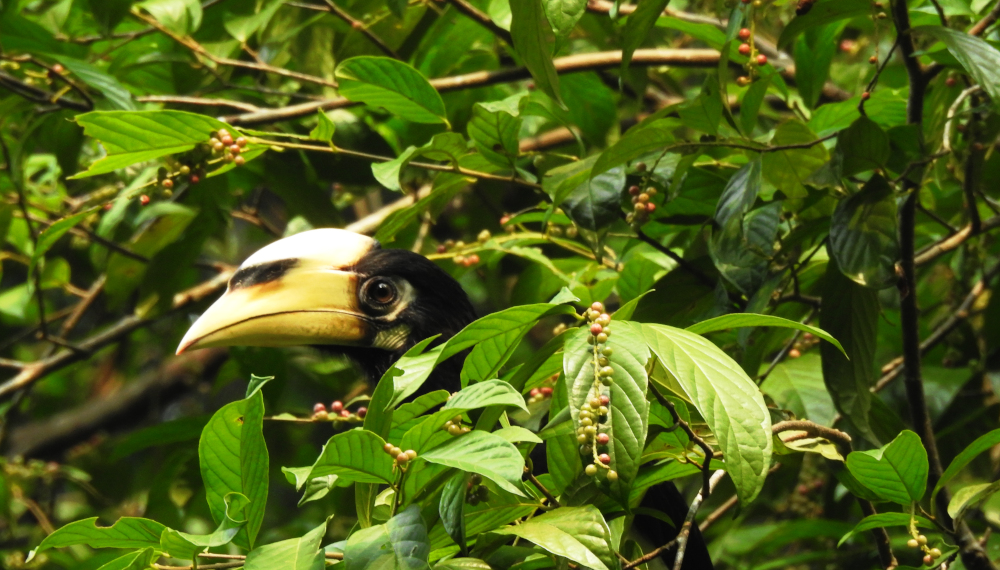
To reach the Gunung Mat Cincang trailhead, we climbed over 600 concrete steps to reach the Seven Wells Waterfall. On the way up we saw two beautiful hornbill birds in the trees near the steps, which was a wonderful surprise. This was the closest range view of hornbills we had experienced while in Malaysia. When we reached the top of the stairs, we admired the top of the waterfall from the viewing platform and then crossed the river to start the hiking trail through the forest.

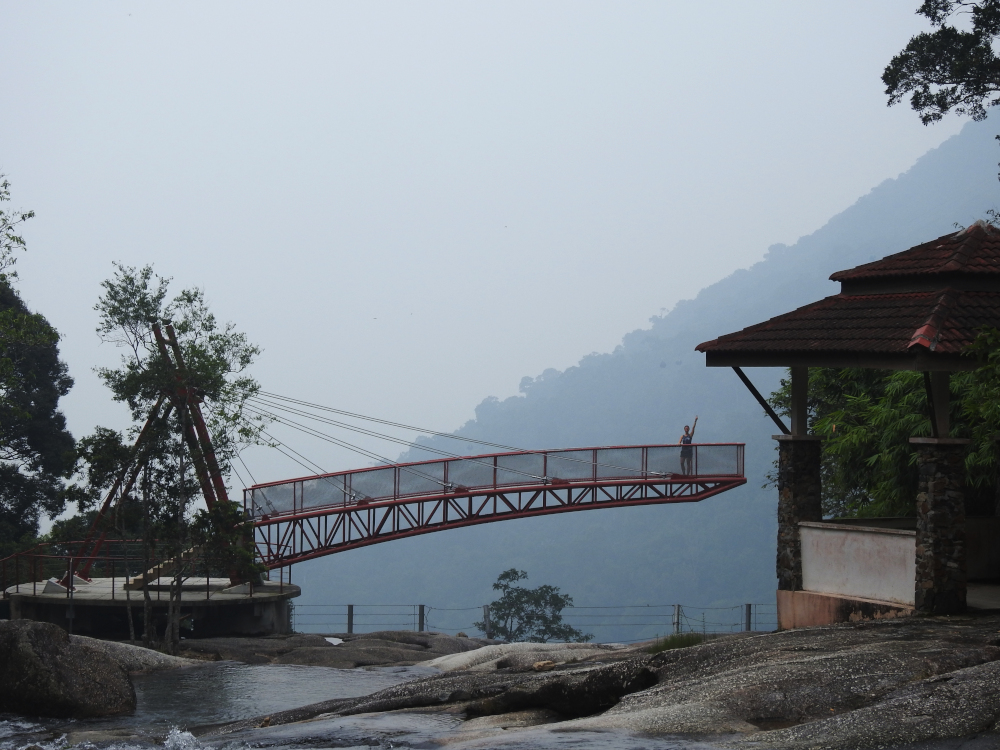
After being on the trail for about ten minutes, we both noticed several leeches trying to inch their way up our shoes to reach our legs. We could see more leeches wiggling around on the forest floor as well. We were both wearing shorts and did not feel like picking leeches off the whole time so we turned back and abandoned the hike. Perhaps this hike would be better in the dry season but the leeches scared us off. After our encounters with them in Danum Valley, I have no love for leeches.
For our plan B, we walked back down the stairs and down the road to what are probably Langkawi’s biggest tourist attractions, the Langkawi Sky Cab and Sky Bridge. While walking, we saw some cute dusky leaf monkeys on a power pole beside the road.

The Sky Cab and Sky Bridge access is located within a place named the Oriental Village, which is like a mini theme park. We purchased a Sky Cab ticket to ride in a special private cable car that had a glass bottom. The ticket also gave us access to an express lane to skip the massive line of people waiting to ride the cable car. The Sky Cab is supposed to be the steepest cable car ride on earth and takes passengers up 708 meters above sea level to Langkawi’s second highest peak of Mt. Machinchang.

When the air is not full of haze, the views of the surrounding islands from the cable car are supposed to be quite nice. While we did not enjoy any long range views thanks to the poor air quality, we did enjoy a nice view of two waterfalls, including the Seven Wells Waterfall where we had been earlier, and the mountains that were close by. The scenery from the cable car would be fantastic on a clear day. I was surprised by how woozy I was feeling while in the cable car with the glass bottom. My usually mild fear of heights seemed to kick into overdrive whenever I looked down.
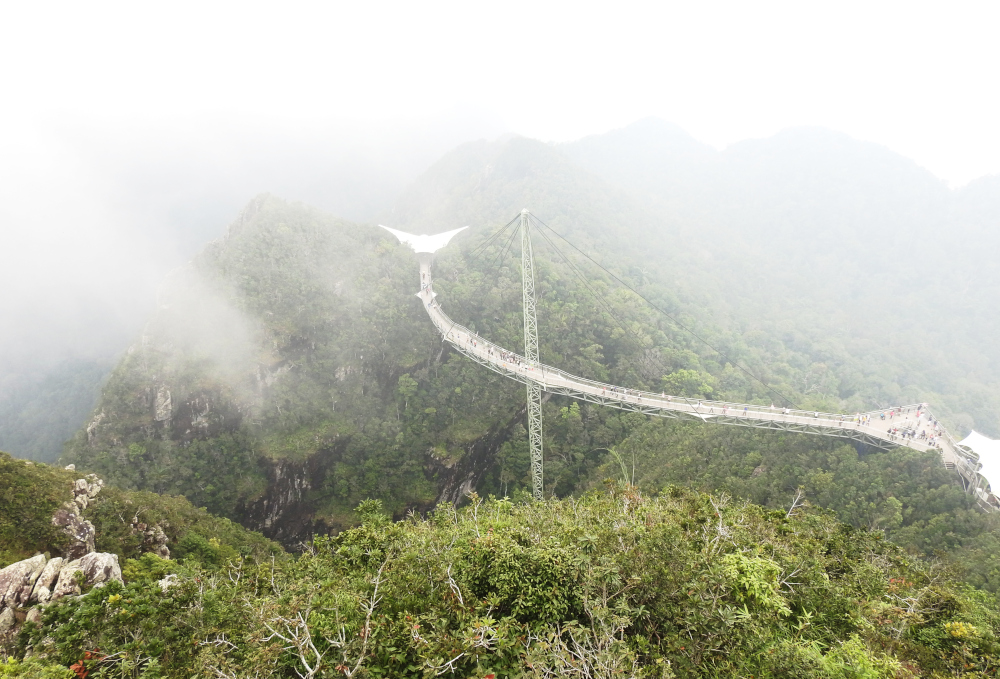
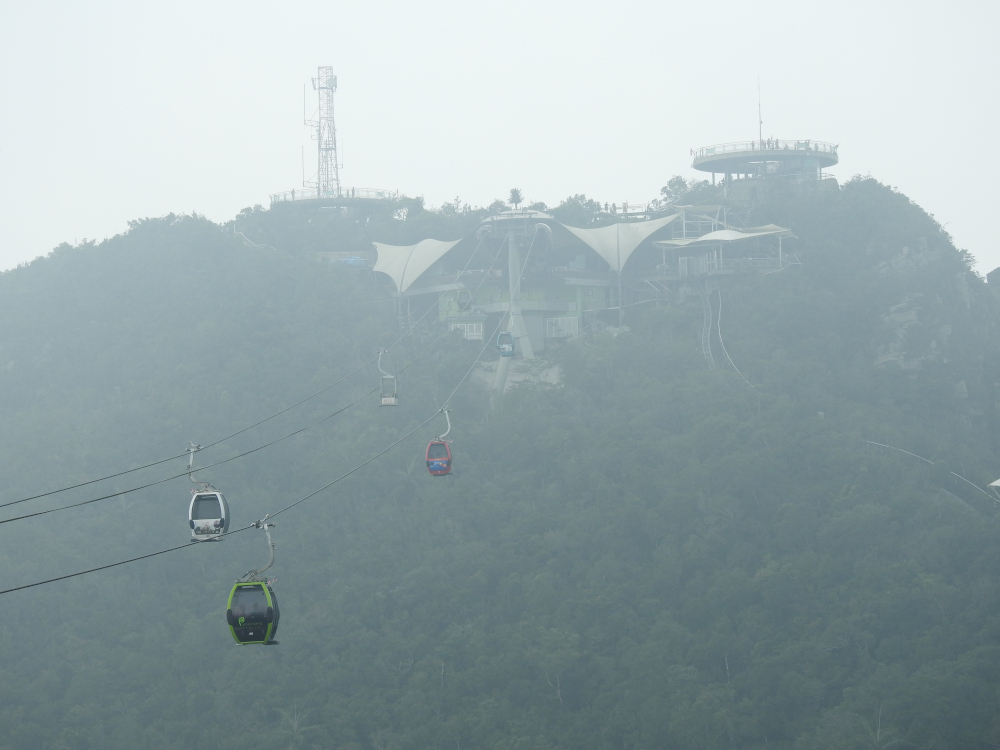
At the top of the cable car we reached a place where you could walk up some stairs or take a train to the Sky Bridge. We walked up the stairs as it wasn’t very far and it required a less expensive ticket than the train. The Sky Bridge is an impressive suspended pedestrian bridge that was built on top of Mt. Machinchang. The bridge’s unique curved shape gives you the feeling of walking on air high up between the mountain peaks. There are sections where the floor is clear glass so you can see how far down the ground is below. Once again the views from the bridge were not great during our visit but it was still interesting to see the bridge. There are some other attractions that are included with the Sky Cab ticket so we checked those out as well. Our favorite was the 3D art museum which had lots of places to take photos with some fun 3D interactive paintings.
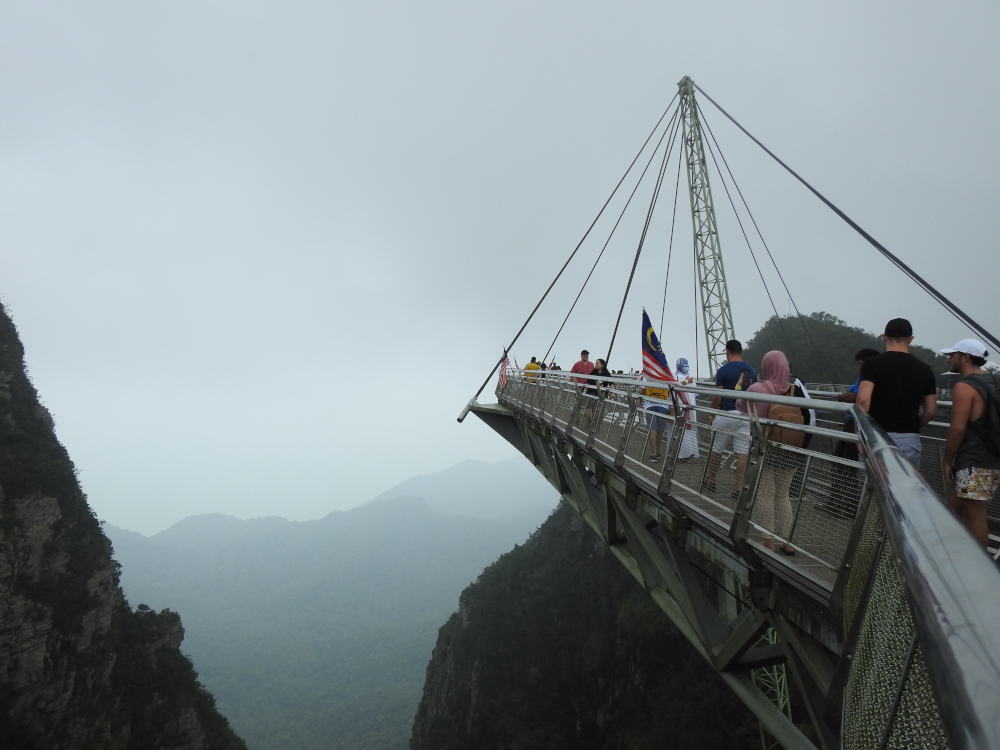
Another day we took a kayaking tour of the mangroves in Langkawi’s Kilim Karst Geoforest Park with Dev’s Adventure Tours. Our wonderful local guide first took our group on a brief tour through Kelawar Cave, where hundreds of bats live. We then traveled by boat to a floating restaurant where we received a brief tour of their fish farm. The fish farm tour was honestly unappealing and I wish it had not been included, but oh well. We then learned we would be exploring the mangrove forest together in tandem kayaks. We are not big fans of tandem kayaks because they are usually harder to steer and you have to worry about coordinating your strokes. We were in water with no current so that meant a lot of paddling.
Mangroves are distinctive trees that rise from a tangle of roots usually growing out of mud or brackish water depending on the tide. They grow in large clusters that form a mangrove forest. We paddled around the canals that travel through the mangroves for a few hours and learned from our guide all about the mangroves and their importance. They serve as a filter for the water and also provide a buffer to the island from storms. Langkawi did experience a powerful tsunami in 2004 and some of the areas where the natural mangroves had been removed for development were heavily damaged.

During our paddle we saw macaque monkeys, monitor lizards, two snakes, some eagles, and some other birds that resemble eagles but are not. We learned from our guide that some other tour operators actually feed the birds chicken fat to attract them to the tourist boats for photos. The birds have started to rely on these feedings and no longer hunt and eat their normal diet. The birds’ life spans have been getting significantly shorter since chicken fat does not provide the proper nutrition they need. It is a sad case of irresponsible tourism practices. Our guide from Dev’s Adventure Tours told our group that feeding wild animals is never advisable and I was glad to hear that stance. Our guide also provided us with drinking water in glass bottles so no one would need to purchase water in single-use plastic bottles, which was a nice eco-friendly touch.
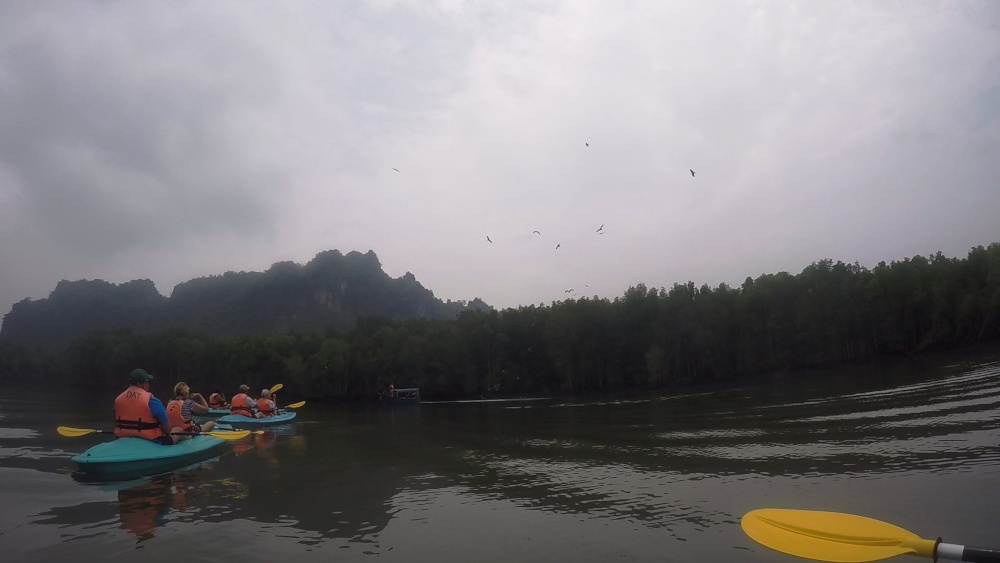
After kayaking, we had lunch at the floating restaurant where they made us a decent vegetarian meal. The kayaking tour was enjoyable but the hazy air conditions put a bit of a damper on enjoying the beauty of the area. I think you can usually see long-range views of other islands on the trip but the air was too hazy for us to see much of anything off in the distance. Our guide was a very pleasant and informative young man and he made the tour quite enjoyable despite the less than ideal conditions.
Langkawi was honestly not one of my favorite places we have been. It just did not feel as multicultural and interesting as the other parts of Malaysia that we had already enjoyed so much. We also were not able to fully experience the natural beauty of the islands due to the bad air quality and lack of visibility. We also found the dining options in Langkawi to be some of the least interesting of almost anywhere we have been in Malaysia. There were many restaurants, but most of their offerings seemed to be similar and revolved around seafood so were not appealing to us. We found some decent Indian food and a place that had vegan sandwiches, but the vegan options we found were mostly underwhelming. Our timing for visiting was not the best and I think under different conditions I probably would have enjoyed Langkawi more. We were definitely ready to move on after our three nights there.

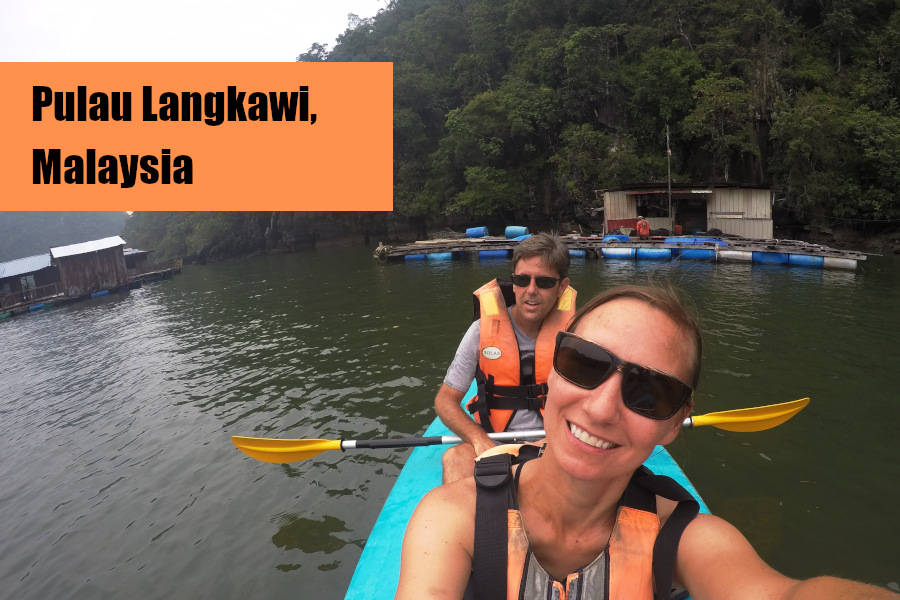
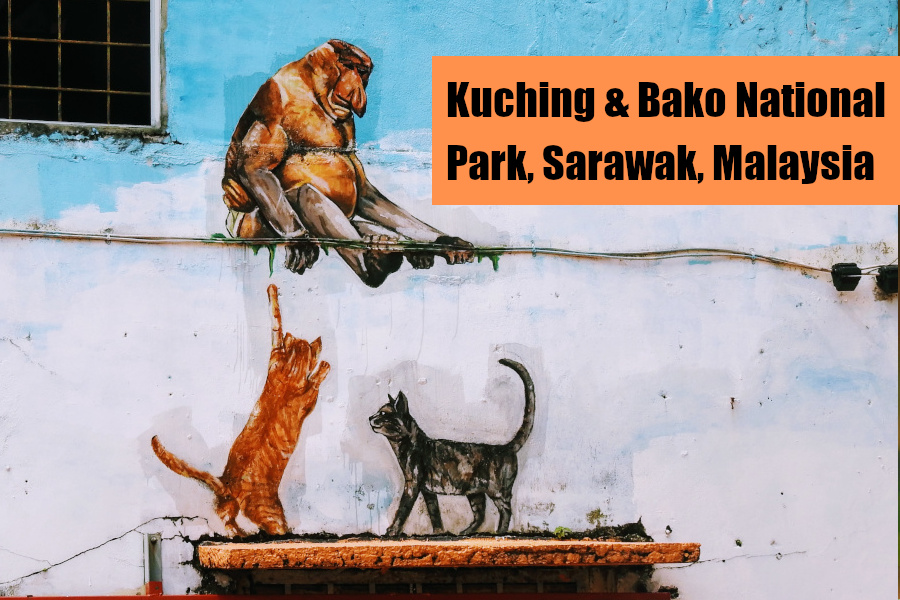


Hi Kerry and Rob, we miss you! Thanks for taking the time to keep us updated through the blog. It’s fantastic! I’m sorry you had to experience the haze from the fires first hand. 🙁 I wanted to share this recent Newsweek editorial from Rainforest Action Network that cites a report that the org where I work – Environmental Paper Network – published regarding the impacts of the paper industry in Indonesia. I thought you might find it interesting. Wishing you guys all safe and fun travels ahead! xoxo
Newsweek: THE FIRES DECIMATING RAINFORESTS CAN ONLY BE STOPPED IF WE SIDE WITH COMMUNITIES OVER CORPORATIONS | OPINION
https://www.newsweek.com/forest-fires-amazon-indonesia-communities-corporations-1467014
Hi Kim, Thank you for sharing this. I did not realize the paper industry was part of the problems there too. Keep up the great work fighting for the forests! They need it!